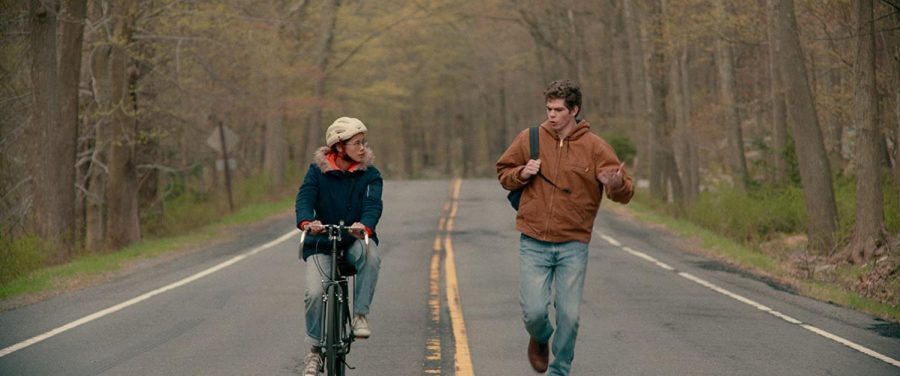In the midst of middling Netflix rom-coms, “The Half of It” stands out as an exceptional outlier.
Though based on a play, “Cyrano de Bergerac,” that has spawned many adaptations, including fellow Netflix rom-com “Sierra Burgess is a Loser,” what sets “The Half of It” apart is, though the characters follow the plot of the play, this film uses a different reward system. Here the characters do not get what they want, they get what they need. As the main character Ellie Chu (Leah Lewis) explains in her opening narration, “this is not a love story, or, not one where anyone gets what they want.” The film rewards character development with the satisfaction of having grown as a person and the authentic relationships that come from this growth, not with the “prize” of winning someone’s heart.
The character Ellie Chu serves somewhat as a self-insert for the creator. Alice Wu, who wrote, directed and produced “The Half of It.” Ellie is one of the few minorities in her god-fearing small town, Squahamish. Moreover, she is an LGBTQ minority in her god-fearing small town, Squahamish. Ellie is detached from everyone around her, responsible for maintaining her family’s train outpost, making sure the bills get paid and doing her and other students’ school work – students whom pay her for writing papers. Let’s just say she has a lot on her plate. Ellie’s father is distant and grieving from the loss of her mother. Ellie is an island, which Wu deftly represents visually, showing Ellie alone in a train booth, alone at band practice and riding her bike to and from school, alone. She is willfully detached, resigned to her own isolation, until Paul Munsky (Daniel Diemer) yanks on her bike and enlists her to write his love letters.
“The Half of It” uses a peerless film language, setting it apart from almost every teen rom-com on the market. Wu uses intertextuality as a mode of communication. Ellie, who feels withdrawn from the people around her, describes herself as often hiding behind other people’s words. In her letters to Aster Flores (Alexxis Lemire), the film’s love interest, she uses quotes or references to books to describe how she feels. However, beyond communication between characters, Wu uses intertextuality frequently to communicate with the audience.
The movie begins with Ellie narrating over an animation, describing Plato’s assertion that human beings originally had four arms and four legs until the gods split them in two, leaving each half to roam the Earth, longing to be completed. This direct communication to the audience, theorizing about love and life sets the tone for the rest of the film. Using metafiction, including movies, songs and books, Wu sets up a discourse with the audience about what it really is to love another person.
The film merges the conventional with the unconventional, featuring characters whose stories are rarely told and using a traditional romantic plot to, more than anything, tell a story about friendship and coming out of one’s shell. Even in the posters for the film, Paul and Ellie are always in focus where Aster is out of focus. The relationship between these two unlikely friends, though not the characters’ main motivation, becomes the heart of the film. Wu hones in on intimate, seemingly insignificant moments of connection. Here, small acts of kindness are given center stage, such as cooking for your friend, quietly supporting them, tucking them in when they are drunk and making sure they have Advil and water when they wake up.
Wu shows throughout the film that love is not in grand romantic gestures, it is in quiet moments, acts of kindness that feel so natural they sometimes go unnoticed. In the end, this is a platonic love story, a story where what the characters think they need and what they actually need diverge, allowing for more meaningful character development.
“The Half of It” does not use love as a marketing tactic, designed to engage the viewer with empty yet appealing relationships and hot actors. Instead, the film operates more as a refrain, exploring multiple philosophical avenues about the nature of love. The audience is left without any clear answers, yet deeply satisfied by the connections made during the film and the path the characters are on by the end.
Sophia Larson can be reached at [email protected]



















